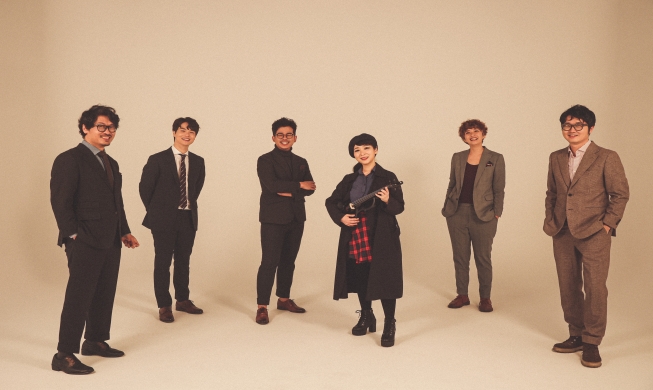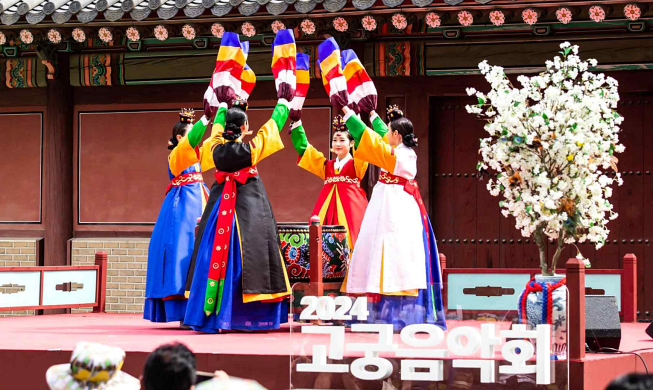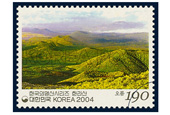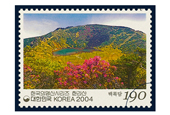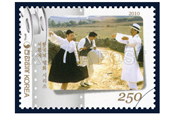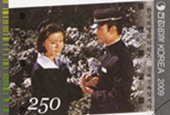-
 Korea.net's 24-hour YouTube channel
Korea.net's 24-hour YouTube channel- NEWS FOCUS
- ABOUT KOREA
- EVENTS
- RESOURCES
- GOVERNMENT
- ABOUT US

Along the Yeongsil Trail to the peak of Hallasan Mountain, there are three volcanic cones (oreum) in a row in the highlands between 1,600 and 1,700 meters above sea level. There, the high mountain field spreads around the Witseoreum and Bangaoreum volcanic cones. This is the Sunjakjiwat Plains.
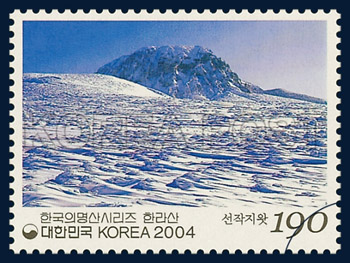
Jakji refers to small stones, while wat means, "a field," in the Jeju dialect. Combined, jakjiwat means, "a field with small stones scattered on it." The wide plain, covered with shrubs, has a gentle slope and covers 6.32 square kilometers near the top of Hallasan Mountain.
There are azaleas and royal azaleas growing everywhere on the Seonjakjiwat Plains, and the field is covered with light pink azaleas and dark pink royal azaleas from April to June. The pink flowers and the summit of Hallasan Mountain that can still be covered with snow create a mystifying view. There is eternal spring (norusaem) near the Nuunoreum volcanic cone and many plants, including thyme, grow in the marshes found in these highlands, showing the mountain's high ecological value. The Seonjakjiwat Plains were officially designated a scenic spot in 2012.
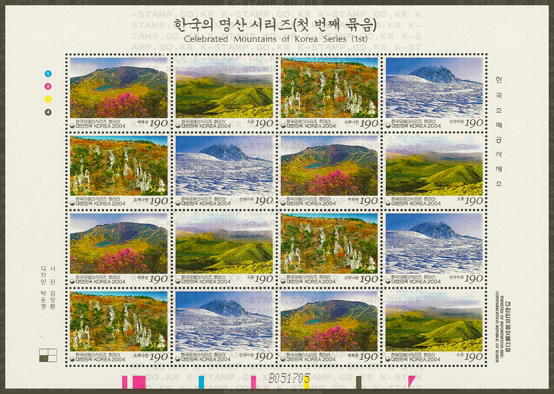
By Limb Jae-un
Korea.net Staff Writer
Photos courtesy of Korea Post
jun2@korea.kr

Korea Post's 2004 stamp shows the Seonjakjiwat Plains.
Jakji refers to small stones, while wat means, "a field," in the Jeju dialect. Combined, jakjiwat means, "a field with small stones scattered on it." The wide plain, covered with shrubs, has a gentle slope and covers 6.32 square kilometers near the top of Hallasan Mountain.
There are azaleas and royal azaleas growing everywhere on the Seonjakjiwat Plains, and the field is covered with light pink azaleas and dark pink royal azaleas from April to June. The pink flowers and the summit of Hallasan Mountain that can still be covered with snow create a mystifying view. There is eternal spring (norusaem) near the Nuunoreum volcanic cone and many plants, including thyme, grow in the marshes found in these highlands, showing the mountain's high ecological value. The Seonjakjiwat Plains were officially designated a scenic spot in 2012.

The first stamp set in the 'Celebrated Mountains of Korea' series shows many of Hallasan Mountain's scenic spots.
By Limb Jae-un
Korea.net Staff Writer
Photos courtesy of Korea Post
jun2@korea.kr
Related Contents
Most popular
- Band Second Moon spreads fusion sound on California tour
- 76 national heritage sites to allow free admission from May 15
- First Korean-style 'taxi driver' diner opened in New York
- Africa's appeal on full display at downtown festival in Seoul
- UK univ., KCC in London host Korea Day event in Sheffield



